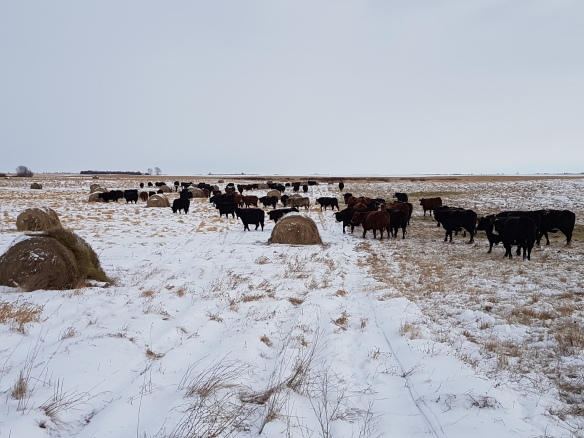In the 1980s, John and Sandra made the decision to shift from grain to cattle production. The Angus breed was found to suit our production and management goals for their efficiency and maternal characteristics. A small group of Hays Converter cows and two bulls were purchased in the early 1990s to increase milk production and growth. We introduced the Maine Anjou breed in the late 1990s. This breed boasts high feed efficiency, good growth and milk production. In 2012, we wanted to add another breed to increase the hybrid vigour into the calves. We decided to purchase a Speckle Park bull, as this Saskatchewan developed breed has excellent carcass characteristics while still fleshing easily on grass and keeping the ever important maternal characteristics.

We aim to have docile, productive cows that can calve unassisted and raise a good calf while maintaining their own body condition on grass alone. Our cows calve on a pasture near the yard where they can be brought in if any assistance is required. Mommas and their babies are moved to another pasture within a few days of age and are rotationally grazed throughout the spring, summer and fall.

Calves are vaccinated to prevent common diseases. Weaning usually takes place in November using the two-stage system. Two-stage weaning is done using plastic nose paddles to first stop the calf from nursing the cow while they remain together in the same pasture. They are separated about a week later, but because part of the weaning is already done, it is much less stressful on everyone involved. The calves are fed hay throughout the winter and are sold in late winter or early spring. Because we do not use hormone implants, use antibiotics only when needed, and keep all of our health records, our calves are eligible to be sold into a natural beef program.

The pregnant cows go back out to pasture after weaning to graze stockpiled grass. After the majority of the grass is eaten, we use bale grazing to feed the cows while adding nutrients back to the hay fields. The cows usually return close to the yard in late winter, where they are fed hay until calving begins again.


